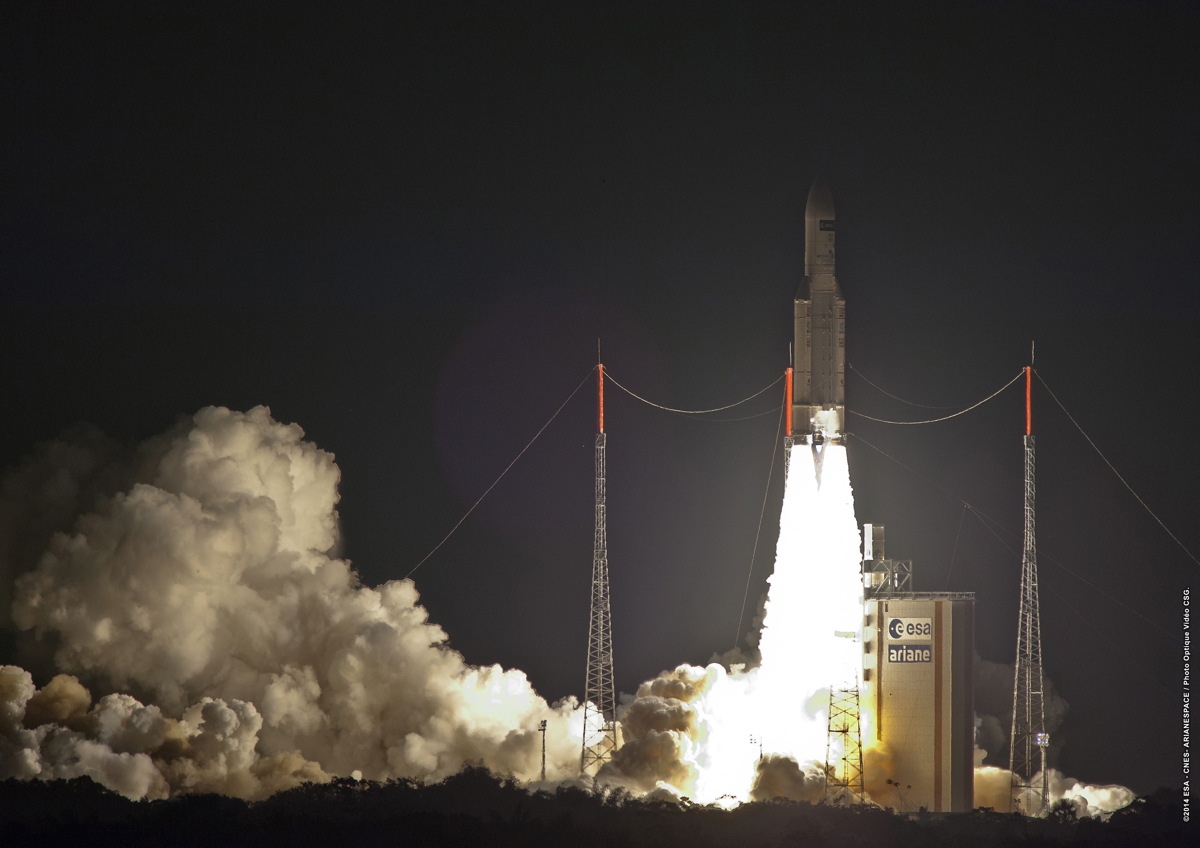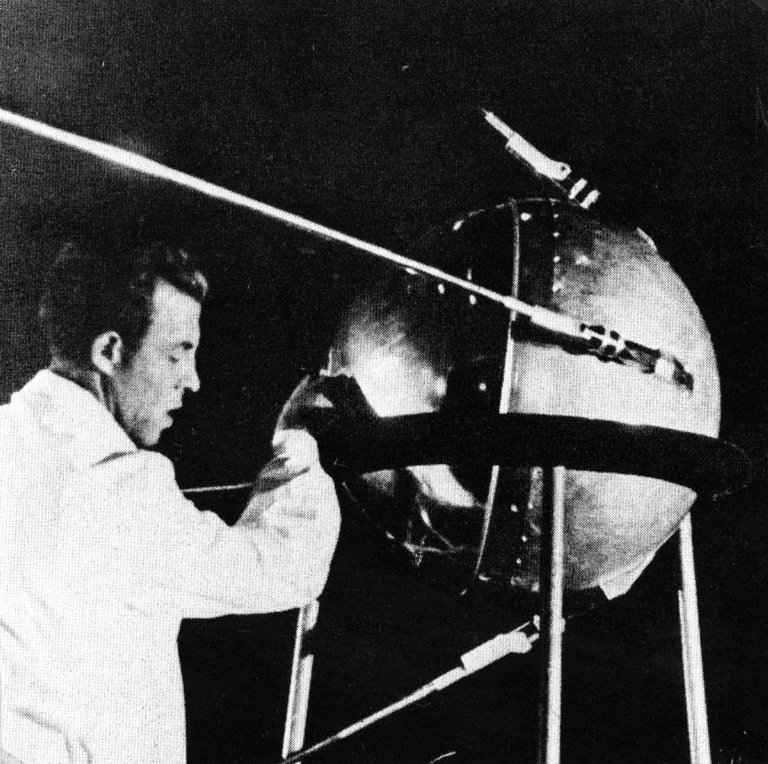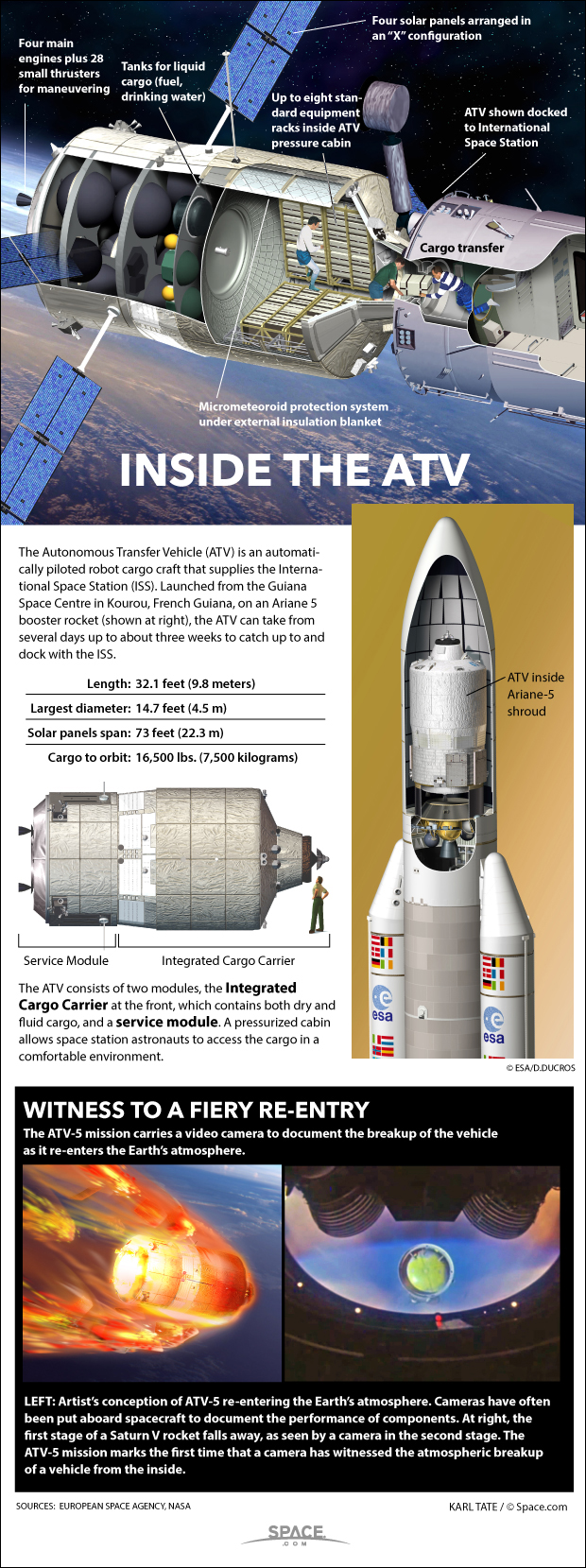
A robotic European cargo vessel is closing in on the International Space Station over the coming week, and skywatchers can follow the chase.
The European Space Agency's fifth Automated Transfer Vehicle (ATV-5) blasted off July 29 and is scheduled to arrive at the orbiting lab on Aug. 12. There will be a number of opportunities to see both the space station and the cargo ship streaking across the night sky, even for observers in brightly lit cities.
ATV-5, which is named "Georges Lemaitre" after the Belgian astronomer and priest, is stocked with 7.3 tons of experiments, spare parts, clothing, food, fuel, air, oxygen and water for the space station's six-person crew. Georges Lemaitre's launch marked the last flight of the ATV fleet, which has been helping to resupply the station since 2008. [Europe's ATV-5 Cargo Mission in Pictures]
Moving stars
The appearance of spacecraft moving across the night sky is not unusual. On any clear evening within a couple of hours of local sunset and with no optical aid, you can usually spot several satellites creeping across the sky like moving stars. Satellites become visible only when they are in sunlight and the observer is in deep twilight or darkness; this usually means shortly after dusk or just before dawn.
What makes this week's passages so interesting, however, is that you'll be able to see ATV-5 gradually chase down the International Space Station (ISS), ultimately catching up to and docking with the larger craft on Aug. 12 at 9:34 a.m. EDT (1334 GMT). Both vehicles will appear to travel across the sky along the same path, and the gap between the two will diminish as the week unfolds.
The duo will look like a pair of "stars," with the much brighter space station leading Georges Lemaitre across the sky. (The ISS is by far the largest and brightest man-made object currently orbiting Earth; it usually appears as bright as Jupiter and occasionally even rivals Venus in brilliance.)


Traveling in their respective orbits at 18,000 mph (29,000 km/h), both vehicles should be visible for about 1 to 4 minutes at a time as they glide steadily across the sky.
Get the Space.com Newsletter
Breaking space news, the latest updates on rocket launches, skywatching events and more!
If all goes according to plan, ATV-5 will reach the vicinity of the space station on Friday (Aug. 8) for a mock rendezvous. The cargo freighter will pass about 5 miles (8 kilometers) underneath the space station to test the capabilities of a new infrared navigation camera that could guide future missions in space. As such, they will be flying in tandem with each other on that date.
Across southern Canada, much of the United States and all of Europe, the space station and ATV-5 will be making a number of evening passes after sunset this week. Unfortunately, for parts of the southern U.S., particularly Florida and the Gulf Coast region, there will be very few or no available passes, because they will be occurring before sunset in the daytime sky.
For those living south of the equator, the ISS and ATV-5 will be making passes in the dawn twilight before sunrise.
When and where should you look?
So, what is the viewing schedule for your location? You can easily find out by visiting one of these popular websites:
- Chris Peat's Heavens Above (http://www.heavens-above.com/)
- NASA's SkyWatch (http://spaceflight.nasa.gov/realdata/sightings/)
Each website will ask for your city and respond with a list of suggested spotting times. Predictions computed a few days ahead of time are usually accurate within a few minutes. However, they can change due to the slow decay of the space station's orbit and periodic reboosts to higher altitudes. Check frequently for updates.
And here is another interesting website: http://www.n2yo.com/?s=25544
This site tracks more than 8,000 satellites in real time. Check out the site's sidebar for additional data. Among other things, this information includes the satellite's speed, elevation and altitude. The sidebar also provides a forecast (with a corresponding map) of the satellite's movement in the next five days.
Editor's note: If you snap a photo of the space station, ATV-5 or any other night-sky sight you'd like to share for a possible story or image gallery, please contact managing editor Tariq Malik at spacephotos@space.com.
Joe Rao serves as an instructor and guest lecturer at New York's Hayden Planetarium. He writes about astronomy for Natural History magazine, the Farmer's Almanac and other publications, and he is also an on-camera meteorologist for News 12 Westchester, N.Y. Follow us @Spacedotcom, Facebook or Google+. Originally published on Space.com.
Join our Space Forums to keep talking space on the latest missions, night sky and more! And if you have a news tip, correction or comment, let us know at: community@space.com.

Joe Rao is Space.com's skywatching columnist, as well as a veteran meteorologist and eclipse chaser who also serves as an instructor and guest lecturer at New York's Hayden Planetarium. He writes about astronomy for Natural History magazine, Sky & Telescope and other publications. Joe is an 8-time Emmy-nominated meteorologist who served the Putnam Valley region of New York for over 21 years. You can find him on Twitter and YouTube tracking lunar and solar eclipses, meteor showers and more. To find out Joe's latest project, visit him on Twitter.









